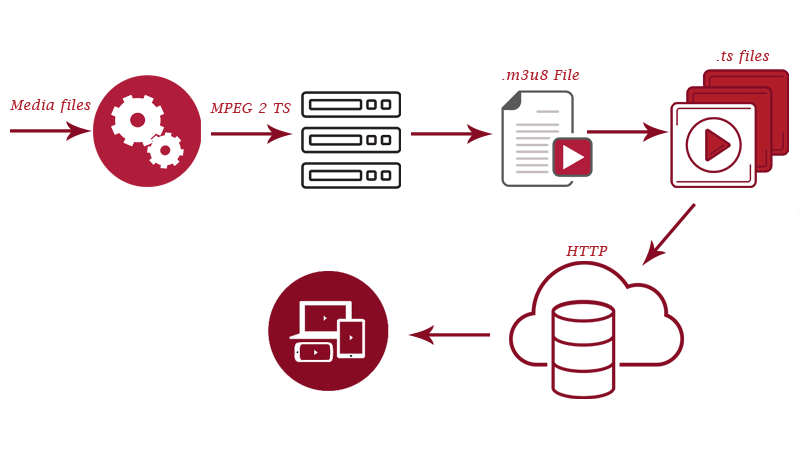
Blog
The term "stream" refers to process of distribution by obtaining the Media. Streaming media is a platform where a content is persistently taken by and dispensed it to end user while being distributed by provider. Live Stream encoding Software generally includes the features to allow you to manage and control your video flow in to the Live Stream.
HLS stands for HTTP Live Streaming. HLS is an adaptive streaming protocol used to deliver audio, video files over the internet by breaking in to small clips to user end devices.
DASH stands for Dynamic Adaptive Streaming over HTTP. MPEG-DASH client can seamlessly adapt to changing network condition and provides highest video quality playback with fewer rebuffering events.
Streaming media has been divided in to two parts called as on-demand and Live streaming. In the first case of on-demand streaming, Media file has been previously recorded and compressed and stored. The file is stored at the server and delivered when requested to multiple receivers on demand. Where as in Live streaming the media is compressed, captured and transmitted on the go (fly). But live streaming requires specific amount of computing resources and hardware support [1].
Apple Inc. Launched and introduced HLS HTTP Live Streaming in June 2009 with their OS. In the current state of Enterprise Mobility and Smart world, Undoubtedly HLS streaming is the protocol which is widely used in todays world for live streaming.